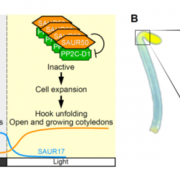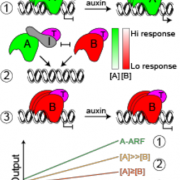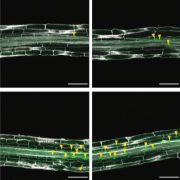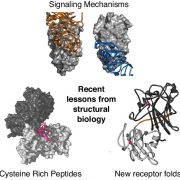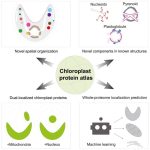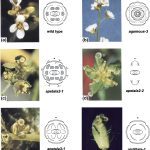Review: Substrate recognition and transport mechanism of the PIN-FORMED auxin exporters
 The PIN-FORMED family of auxin transporters were first identified through genetic screens of Arabidopsis thaliana in the 1980s. Recessive pin mutants form a flowerless, pin-like inflorescence. Subsequent work showed that the encoded genes are membrane-localized auxin transporters and contribute to the export of auxin from the cell. In this review, Ung et al. build on their pivotal 2022 studies and provide a deep look into the structure of PIN transporters. PINs assemble as homodimers, and each monomer includes a scaffold domain and a transporter domain. Particularly interesting is the discussion of how PINs move auxin, through a “cross-over elevator” motif; basically, the substrate is shifted along the transport channel as if in an elevator shaft as the transporter toggles between the Inward and Outward state. The authors also discuss the relatively low affinity of the PINs for auxin, which as they point out means that auxin efflux increases with cytosolic auxin concentration, and also prevents PINs from competing with the very important cytosolic auxin receptors. It’s a fascinating article to add to your reading list. (Summary by Mary Williams @PlantTeaching) TIBS 10.1016/j.tibs.2023.07.006
The PIN-FORMED family of auxin transporters were first identified through genetic screens of Arabidopsis thaliana in the 1980s. Recessive pin mutants form a flowerless, pin-like inflorescence. Subsequent work showed that the encoded genes are membrane-localized auxin transporters and contribute to the export of auxin from the cell. In this review, Ung et al. build on their pivotal 2022 studies and provide a deep look into the structure of PIN transporters. PINs assemble as homodimers, and each monomer includes a scaffold domain and a transporter domain. Particularly interesting is the discussion of how PINs move auxin, through a “cross-over elevator” motif; basically, the substrate is shifted along the transport channel as if in an elevator shaft as the transporter toggles between the Inward and Outward state. The authors also discuss the relatively low affinity of the PINs for auxin, which as they point out means that auxin efflux increases with cytosolic auxin concentration, and also prevents PINs from competing with the very important cytosolic auxin receptors. It’s a fascinating article to add to your reading list. (Summary by Mary Williams @PlantTeaching) TIBS 10.1016/j.tibs.2023.07.006


